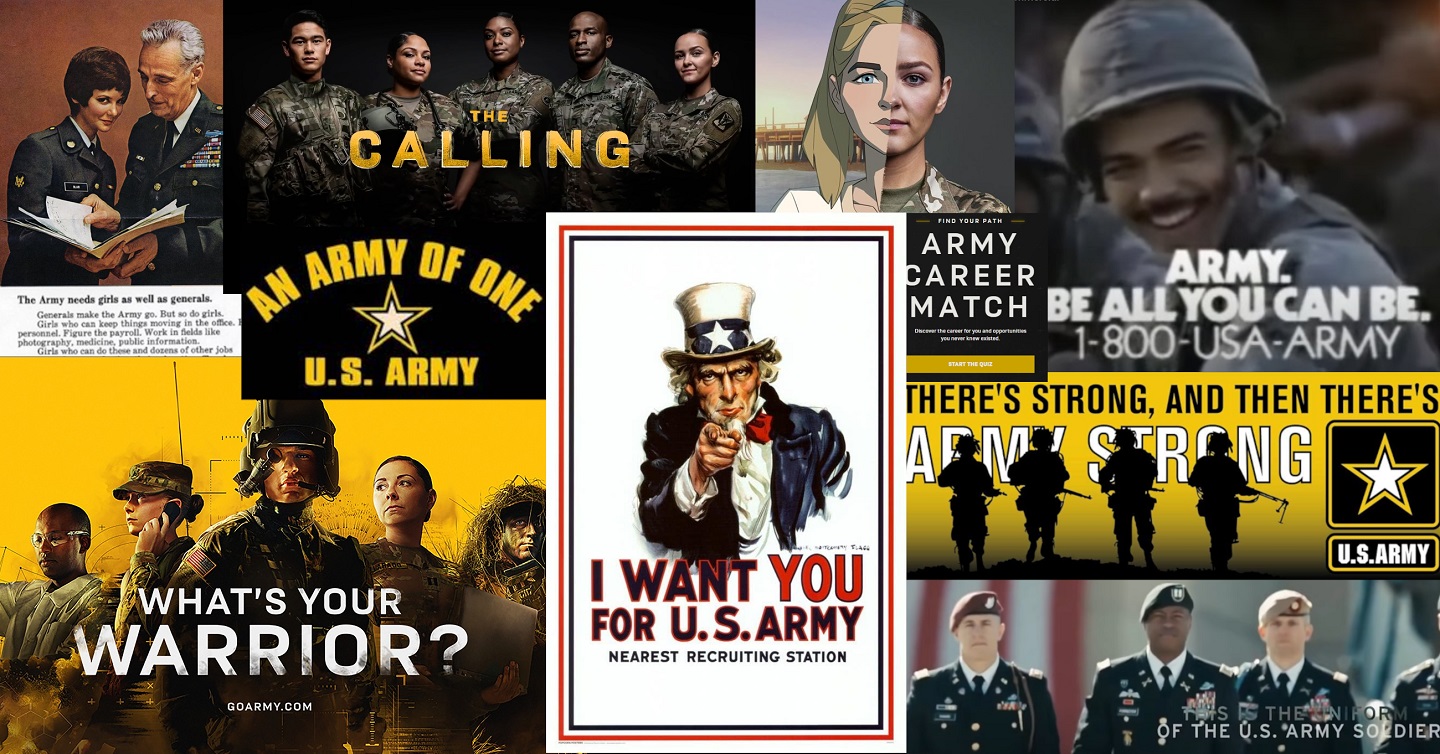
EDITOR’S NOTE: We mistakenly qualified the total annual number of recruits necessary for Army end strength as active duty only. The number cited in fact accounts for the total force of active duty, National Guard and Reserves.
Every year the U.S. Army seeks out 125,000 to 140,000 new recruits to maintain the desired end strength and capability of the force. And that’s just for the active duty component. In order to do that the Army Enterprise Marketing Office has to craft a message that appeals to a broad audience across the shrinking qualified U.S. population. All the while the Army has to compete with the Navy, the Air Force, the Marines and now the Space Force also trying to attract the most qualified recruits from the U.S. citizenry. A BETTER PEACE welcomes Matt Lawrence and John Horning to the virtual studio to discuss the myths a-nd challenges Army marketing has to contend with. They join podcast editor Ron Granieri to look at what it takes to create a message campaign that entices high quality personnel and dispel the myth that the Army is “the bureaucratic meat grinder of the underprivileged.”
They’re not just going to show up at the door. We have to reach out to them and we have to get them interested in taking a look at the military and start what John mentioned, that consumer journey.
Podcast: Download
John Horning is a Lieutenant Colonel in the U.S. Army and a graduate of the AY20 Resident class of the U.S. Army War College. He is the director of marketing execution at the Army Enterprise Marketing Office in Chicago, IL.
Matt Lawrence is a Colonel in the U.S. Army and a faculty member at the U.S. Army War College. He is a communications specialist at the Strategic Studies Institute and teaches an elective course on manning and marketing the military.
Ron Granieri is an Associate Professor of History at the U.S. Army War College and the Editor of A BETTER PEACE.
The views expressed in this presentation are those of the speakers and do not necessarily reflect those of the U.S. Army War College, U.S. Army, or Department of Defense.
Photo Credit: Courtesy of the U.S. Army





I’m confused by your 125,000-140,000 new recruits numbers – the Army active duty recruiting mission is habitually a little more than half that number (62k – 80k depending upon the year). Having served as a commander in USAREC, it is a critical mistake to consider the other Services as competition. Our real competition is the civilian sector and the market of qualified prospective recruits is vastly greater than what all the Services need to recruit annually. These are key concepts that should be shaping how we engage the public in our marketing efforts; I find it concerning that these falsehoods are part of the summary of this podcast and ostensibly the foundation that AMO starts from for their efforts.
Dan, you are correct that the active duty mission is about half of what I said the Army needs to recruit, but you are forgetting that there are three components to the Army. The Army Reserve and National Guard require approximately 60K recruits themselves. On top of that, we also market for Army ROTC and West Point. You are correct that the market of qualified prospective recruits is greater than the services’ needs, but when you eliminate those who are not propensed for military service, it is less than the total number needed (the total DoD 2020 recruiting goals were 240,149, not including officer programs). So marketing’s challenge, since we have the greatest manpower requirements in the Army, is to get non-interested youth to look harder at us and make an informed decision.
As to the issue of competition, we describe the other services as “friendly competition.” We are, after all, looking for young adults, propensed for military service, who meet the same general qualifications. When we had joint recruiting stations, you could see that competition in the flesh as recruiters rushed to be the first to greet anyone who came through the door. If you listen to the podcast, you will get that nuance from my colleague.
Apparently, there was a misprint in the transcript that said the 125-140K was active only. That is being corrected.
There are still common errors about the Vietnam War.
When 2/3 of the men who served in Vietnam were volunteers (with 79% having a high school education or better) and approximately 70% of the Vietnam KIAs were volunteers is something that almost never is mentioned.
As late as about a decade ago when I was teaching in a depressed area of a big city, a senior member of the school staff subscribed to the belief that the Army concentrated on schools in the poor, minority areas for recruits during the Vietnam War, when “86% of the men who died in Vietnam were Caucasians, 12.5% were black, 1.2% were other races.”
All of these facts need to be said when these errors arise in recruiting.
The Army was in a far better shape back then – a personal opinion.